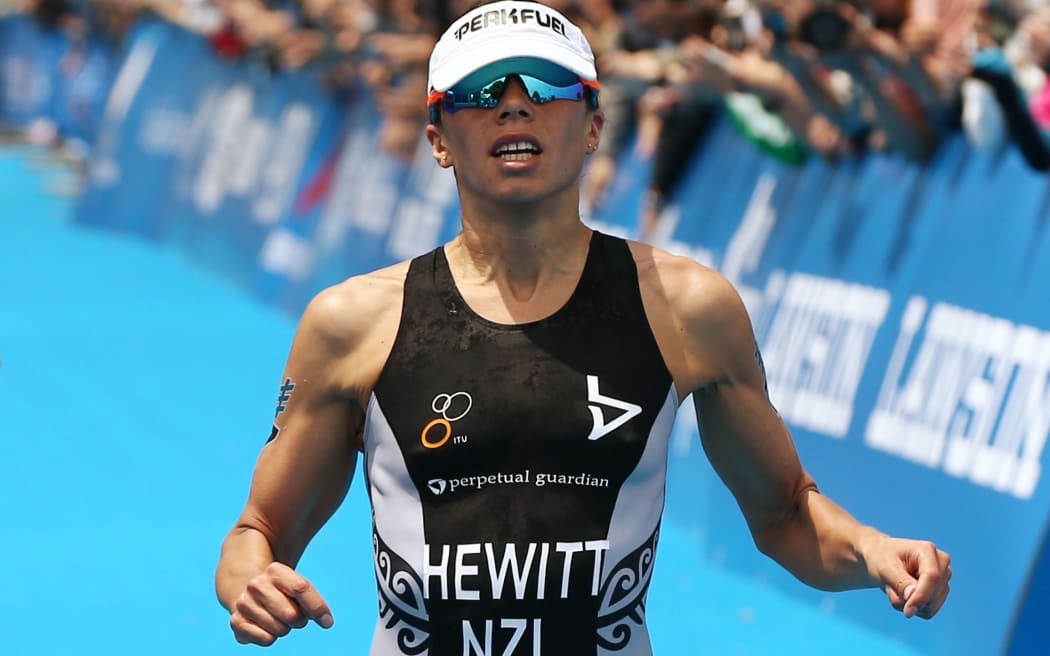Olympic Disciplines - Triathlon is a multi-discipline sport, one in which New Zealand enjoys a successful history, both in and out of the Olympics.

New Zealand triathlete Andrea Hewitt. Photo: Photosport
It is comprised of three endurance-based disciplines - swimming, biking and running - which occur in that sequence.
Triathlon races can differ in distances.
The 'Olympic' or 'standard' distance triathlon involves a 1500m swim, 40km bike and 10km run.
Triathlon races can also vary in that they can be both drafting and non-drafting, with drafting being the style raced at the Olympic Games and throughout the International Triathlon Union (ITU).
New Zealand's Andrea Hewitt was the first athlete confirmed for Rio across all sports by the NZOC.
Competition at Rio
Both the women's and men's triathlons will take place at Fort Copacabana, with 55 athletes in each event.
Men's triathlon: Thursday 18 August 2016, 11am local start time.
Women's triathlon: Saturday 20 August 2016, 11am local start time.
This will be the first Olympic Games where the triathlon involves a beach start and potentially a proper surf swim.
The Stars of Triathlon
Men's triathlon has been dominated by three competitors over the past few years - British brothers, Alistair (the older brother) and Jonathan Brownlee, and Spain's Javier Gomez Noya.
At the 2012 London Olympic Games, Alistair Brownlee won the gold, with Gomez and Jonathan Brownlee finishing second and third, respectively.
Since its start in 2009, Gomez has won the ITU World Series (WTS) four times (2014, 2013, 2011 and 2010), and Alistair and Jonathan once each, 2009 and 2012, respectively.
Other male triathlete stars of note are Spain's Mario Mola, who finished second in last year's ITU WTS, and South African Richard Murray, who placed third at the 2014 Commonwealth Games.
The Athens Olympic Games bronze medallist, Sven Riederer, is also noteworthy.
The American women are currently dominating the women's race. Gwen Jorgensen has led women's triathlon since 2014, with a run leg few currently in the sport can match.
She won the 2014 ITU WTS and has been unbeaten since April 2014. Sarah True finished second to Jorgensen in last year's series, and Katie Zaferes is also having a strong showing with several second-place finishes to Jorgensen in 2015.
New Zealand's own Andrea Hewitt is also a top performer. She finished second overall in the World Championship in 2015, which is her fifth World Championship medal in seven years.
She has finished in the top three in the ITU WTS end year rankings four times since 2009, in 2014 finishing third in the series and second at the WTS Grand Final Edmonton.
Fellow New Zealand, Nicky Samuels, also had a strong showing in 2014, finishing the series in fifth and placing third at the WTS Grand Final Edmonton.
Did you Know?
The women's race at the 2012 London Olympic Games took 1:58.48 for Nicola Spirig and Lisa Norden who finished first and second, respectively. Their sprint finish saw the margin between the two smaller than the gap between gold and silver in both the women's and men's 100m sprint finals.
Drafting - in the swim, it means swimming directly behind or beside a swimmer in front of you, which makes it easier for you to swim at that same pace.
Beach start - when a triathlon race is started on the beach and athletes have to run into the water to begin the swim, as opposed to diving off a pontoon, which is commonly done.
Discard - a competitor is not allowed to discard or 'litter' anything on the course other than in the official discard zones. Bottles, gel and food packaging must not be discarded on course, except in these areas.
Penalty - a transgression of race rules can result in an athlete serving a time penalty. This is notified on a penalty board next to the course and is served in an official penalty box on the run leg. Some penalties can be applied in transition.

